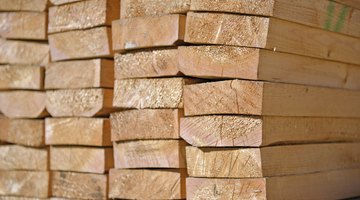The Definition of Wane in Lumber
The term "wane" is often used to describe missing areas on lumber. The term typically refers to defects on the ends or sides of the lumber, but wane can occur just about anywhere on milled wood. Wane is often associated with bark that remains on the lumber after it's milled.

Cause and Solution
Wane or skip is caused when surfacing machines or planers fail to remove all of the material from a low spot on the lumber. Wane can be removed by running the lumber through a planer, or it can be cut from the edge or end with a saw. Wane typically occurs on the ends of lumber but may also run anywhere across the board's length. Wane usually occurs on one side of the board only and typically doesn't affect the integrity of the lumber. In most applications the board can be used normally by turning it over to reveal the good side.
The Drip Cap
- The term "wane" is often used to describe missing areas on lumber.
- Wane typically occurs on the ends of lumber but may also run anywhere across the board's length.
Resources
Writer Bio
Specializing in hardwood furniture, trim carpentry, cabinets, home improvement and architectural millwork, Wade Shaddy has worked in homebuilding since 1972. Shaddy has also worked as a newspaper reporter and writer, and as a contributing writer for Bicycling Magazine. Shaddy began publishing in various magazines in 1992, and published a novel, “Dark Canyon,” in 2008.
Photo Credits
- KenanOlgun/iStock/Getty Images
- KenanOlgun/iStock/Getty Images
More Articles



